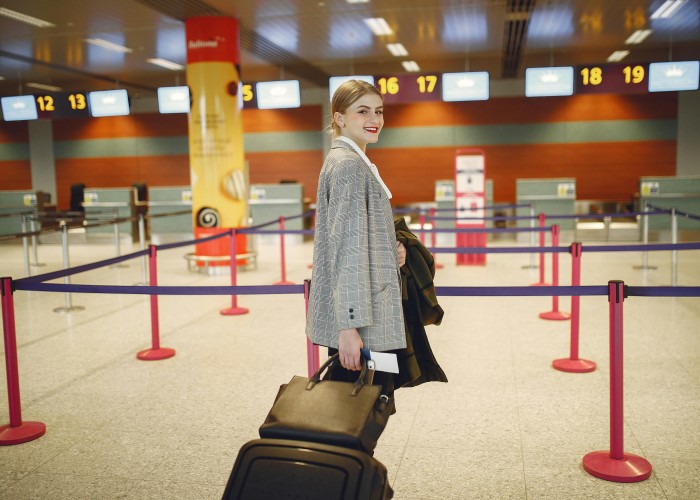Travel blogging is an exciting way to combine your love for exploration with writing and content creation. For beginners, starting a travel blog can feel overwhelming, but with the right guidance, it’s possible to create a blog that engages readers and ranks well on Google. This guide covers everything you need to know to get started, from planning to content strategies. Travel Blogging Tips for Beginners.
Why Start a Travel Blog?
Travel blogging offers multiple benefits beyond just sharing your experiences:
- Share Your Adventures: Document your travels and inspire others.
- Develop Your Skills: Improve writing, photography, and digital marketing skills.
- Build an Online Presence: Establish yourself as a trusted source of travel information.
- Opportunities for Growth: With time, travel blogs can open doors for collaborations, freelance work, and even income opportunities.
Understanding why you want to start will help you stay consistent and focused on your blogging journey.
Choosing Your Travel Blog Niche
A niche helps your blog stand out in a crowded travel blogging world. Consider these popular niches:
- Budget travel
- Luxury travel
- Solo travel
- Family travel
- Adventure travel
- Sustainable travel
- Cultural experiences
Pick a niche that aligns with your passion. This focus will attract a dedicated audience and make content creation easier.
Setting Up Your Travel Blog
Starting a blog involves more than writing. Here’s a step-by-step guide:
- Pick a Domain Name: Choose a name that’s easy to remember, relevant to travel, and reflects your personality.
- Select a Hosting Platform: Reliable hosting ensures your blog is accessible globally. Popular beginner-friendly options include platforms with WordPress integration.
- Design Your Blog: Use a clean, mobile-friendly design. Focus on easy navigation and readability.
- Install Essential Plugins: For SEO, speed optimization, and social media sharing.
- Plan Your Blog Structure: Include sections like travel guides, tips, destinations, and itineraries.
Writing Engaging Travel Content
Quality content is the heart of your travel blog. Follow these tips to create engaging posts:
- Use Short Paragraphs: Easy to read on both desktop and mobile.
- Include Clear Headlines: Use headings and subheadings to structure content.
- Tell a Story: Personal experiences make your blog relatable.
- Incorporate Useful Tips: Share actionable advice for readers.
- Use Visuals: High-quality images and videos enhance your content and engagement.
- Focus on SEO: Include high search keywords naturally in your titles, headings, and content.
High Search Keywords for Travel Blogging
- Travel tips for beginners
- How to start a travel blog
- Travel blogging ideas
- Best travel destinations
- Travel itinerary tips
- Travel photography tips
Using these keywords in your posts helps search engines understand your content and improves ranking potential. Travel Blogging Tips for Beginners.
SEO Tips for Travel Bloggers
SEO (Search Engine Optimization) ensures your blog reaches more readers. Here’s a beginner-friendly approach:
- Keyword Research: Identify high-traffic keywords in your niche.
- Optimize Titles and Headings: Use keywords naturally in titles and headings.
- Write Meta Descriptions: Each post should have a compelling meta description with keywords.
- Internal Linking: Link to other relevant posts on your blog to keep readers engaged.
- External Linking: Reference authoritative sources without direct promotion.
- Image Optimization: Use descriptive alt text and compress images for faster loading.
- Mobile-Friendly Design: Most readers access content via mobile devices, so responsive design is crucial.
Social Media and Audience Engagement
Promoting your blog is as important as writing content. Effective ways to build an audience include:
- Share on Social Platforms: Instagram, Pinterest, and Facebook are excellent for travel content.
- Engage With Followers: Reply to comments and messages to build a loyal community.
- Email Newsletter: Collect emails and send regular updates to readers.
- Collaborate With Other Bloggers: Guest posts or social media collaborations can expand reach.
Monetization Options for Beginners
While the initial focus should be on quality content, travel blogs can eventually be monetized:
- Display Ads: Google AdSense is beginner-friendly for revenue generation.
- Affiliate Programs: Recommend travel products or services relevant to your readers.
- Sponsored Content: Collaborate with brands in your niche.
- Digital Products: Sell travel guides, photography presets, or eBooks.
Focus on providing value first. Monetization will follow as your blog grows.
Staying Consistent as a Travel Blogger
Consistency is key to building a successful blog:
- Set a Publishing Schedule: Even one high-quality post per week can help.
- Plan Your Content: Use an editorial calendar to organize topics and deadlines.
- Track Performance: Monitor page views, keywords, and engagement to improve content strategy.
- Keep Learning: SEO, writing, and social media trends constantly evolve.
Common Mistakes Beginners Should Avoid
- Neglecting SEO
- Overloading posts with ads or promotions
- Ignoring mobile readers
- Writing without a niche focus
- Not engaging with the audience
Avoiding these mistakes will keep your blog professional and user-friendly.
Essential Tools for Travel Bloggers
- Content Management System: WordPress or similar platform
- Photo Editing Software: Lightroom or Canva
- SEO Tools: Keyword research and analytics tools
- Social Media Management: Platforms like Buffer or Hootsuite
- Email Marketing: Platforms like Mailchimp
These tools help streamline workflow and improve blog quality.
FAQs About Travel Blogging
Q1: How do I start a travel blog for free?
You can use free blogging platforms to start, but paid hosting and a custom domain give a professional touch and better SEO opportunities.
Q2: How often should I post content?
Aim for at least one high-quality post per week. Consistency is more important than quantity. Travel Blogging Tips for Beginners.
Q3: How can I improve my travel blog SEO?
Use keyword research, optimize titles and headings, add internal links, and focus on mobile-friendly designs.
Q4: What equipment do I need for travel blogging?
A good camera or smartphone, laptop, and basic photo editing tools are enough for beginners.
Q5: How long does it take to grow a travel blog?
Growth varies, but consistent posting, SEO, and social media promotion typically show results in 6–12 months.
Q6: Can I travel blog full-time?
Yes, but it requires dedication, consistent content creation, and monetization strategies to generate income. Travel Blogging Tips for Beginners.






Leave a Reply